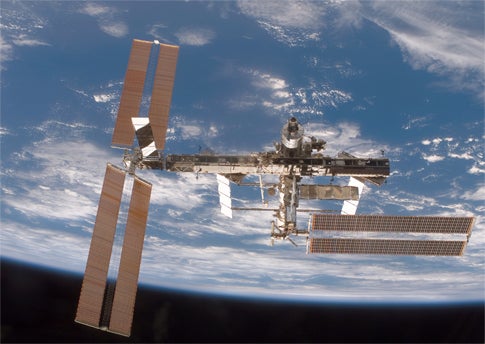Russian engineers troubleshooting failed computers aboard the International Space Station (ISS) were unable to restore them Thursday night. Located in the Russian Zvezda module, the computers, which control essential command and guidance systems, malfunctioned June 13. The problems followed U.S. astronauts’ deployment of a new, 22,000-watt solar array earlier this week. Nikolai Sevastyanov, president of Russia’s Energia Corporation, told Interfax today that a “breakdown in the electricity network occurred when the astronauts switched on the panels on the U.S. segment.” A surge “exceeded the permitted norms” and damaged the computers’ “regular and standby energy sources.”
The unprecedented failure of the German-built computers poses no immediate risk to ISS or the space shuttle Atlantis now docked to it. In a briefing Thursday afternoon, William Gerstenmaier, NASA’s associate administrator for space operations, said he expected the problems would be resolved before Atlantis departs the station for return to Earth. That’s unlikely if the computers’ primary and backup power supplies are, in fact, damaged. In the event the problems persist, Gerstenmaier said managers could find alternatives for stabilizing the $100 billion laboratory.
“I think we’re in good shape,” said ISS program manager Mike Suffredini this afternoon. “We still have a lot of options to go through to recover these machines. We’ve got a talented group of people to look at attitude control.”
Both U.S. and Russian segments participate in controlling ISS as it circles Earth. Gryoscopes on the American side stabilize the facility, while thrusters on the Russian side take over when large position changes are required, such as with docking operations or when ISS needs to avoid space debris. Thrusters on space shuttle Atlantis now will take over these duties.
But Atlantis must return before the oxygen that powers its electricity-generating fuel cells runs out. NASA already has extended the mission by 2 days so astronauts could perform an additional spacewalk to secure a postcard-sized chunk of insulation on Atlantis. Officials say another mission extension to deal with the computer problem is possible.










